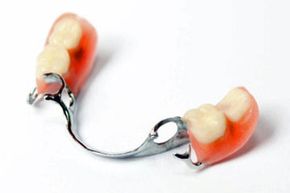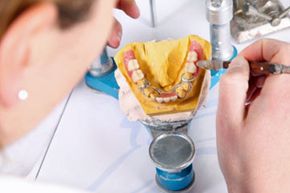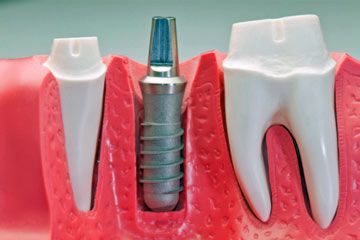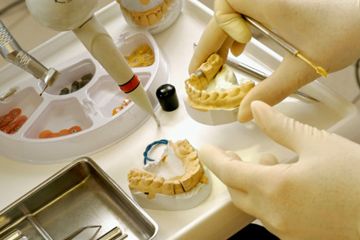We have bridges that span streams, traverse gorges, soar over bays and connect the banks of rivers around the world. Yet there is another more humble bridge that has had an impact on human society equal to that of the Golden Gate or Rialto. That piece of engineering genius is the dental bridge.
Like other bridges, dental bridges span a gap -- in this case, a gap in the mouth caused by the loss of one or more teeth. It is a much-needed piece of dental hardware; statistics show that 69 percent of adults aged between 35 and 44 have lost at least one tooth either through an accident, decay, gum disease or a failed root canal [source: American Association of Oral and Maxillofacial Surgeons].
Advertisement
While replacing a missing tooth might seem merely like a cosmetic concern, the fact is that even just one AWOL chomper can have a serious impact on dental health. That's because teeth need each other to stay in proper position. So when one goes missing, the opposing and neighboring teeth can begin to shift out of position, potentially leading to a misaligned bite, problems with the temporomandibular joint (TMJ), and an increased risk of tooth decay and gum disease.
Dental bridges range between $500 and $900 per tooth depending on their complexity and materials, and dental insurance typically pays for half the cost [source: Johnstone]. The materials that comprise bridges include porcelain, porcelain fused to metal (PFM) and all gold. Of these, PFM and gold bridges are the strongest and are most often used for back teeth where aesthetics aren't a concern. All-porcelain bridges work well for front of the mouth as they can blend nicely with the surrounding teeth. Depending on the location in the mouth and the amount of pressure placed on bridges, their longevity can vary, although it is not unheard of to have a bridge last as long as 20 years [source: Johnstone].
Next: The three major types of dental bridges.
Advertisement



